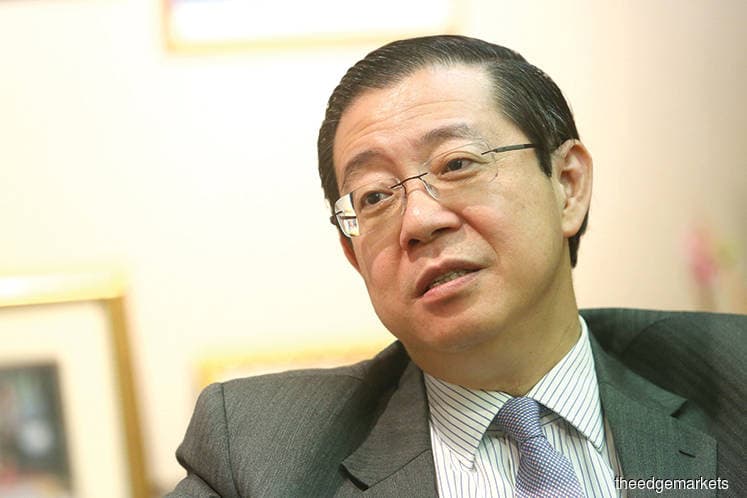
This article first appeared in The Edge Financial Daily on September 24, 2018
KUALA LUMPUR: Finance Minister Lim Guan Eng last week signalled in a television interview that Budget 2019 is likely to be sparse on goodies, or a difficult budget, as it will take about three years to ease the nation’s constricted fiscal position.
A Public Finance Committee has been established with an economic road map unveiled. At the same time, his ministry is contemplating two short-term financing options that are not expected to adversely impact growth — the issuance of debt and asset monetisation.
DBS Group Research cautioned that the upcoming budget could “disappoint”. Government spending is likely to be crimped as more debt positions unravel, its equities strategist Joanne Goh wrote in a note last Thursday.
However, while a lean budget will not come as a surprise, it is unlikely to prescribe drastic spending cuts to the extent that it derails growth, said Dr Yeah Kim Leng, a professor of economics at Sunway University Business School.
This is partly because the prevailing environment — with higher crude oil prices giving rise to better oil revenue and external demand that is supportive of export-oriented industries — still remains positive for fiscal restructuring efforts.
Yeah said a key challenge for the Pakatan Harapan government is to be innovative and disciplined given the RM21 billion revenue shortfall — the result of replacing the goods and services tax with the reinstated sales and services tax — and its wish to fulfil its welfare-centric election manifesto.
“Narrowing the revenue-expenditure gap is going to be a tough balancing act. Since government spending is still one of the contributors to gross domestic product (GDP) of the country, the ministry will need to ensure they are not overly aggressive in terms of cuts that they end up exceeding the deficit target of 3%,” he told The Edge Financial Daily over the phone.
“While the expansionary economic cycle is providing some leeway for the government to cut back on spending without jeopardising growth momentum, it should continue providing support for the private sector to sustain confidence levels and support expansionary activities,” he added.
As corporate and personal income taxes make up a large chunk of the revenue structure, higher economic activities may lead to more revenue.
Yeah also pointed out that the 1Malaysia People’s Aid scheme needs to be more stringent in its criteria for more effective spending. Since its implementation in 2012, the previous administration had spent a total of RM25.7 billion in cash handouts.
“This is one way the government can save couple of billions to be used for other development purposes, such as healthcare, education, rural development and initiatives tackling urban poverty,” he observed.
Julia Goh, UOB Malaysia’s senior economist, also stressed that more can be done to trim unproductive expenditure — a preferred option as opposed to introducing new taxes that are unpopular and likely to raise business costs.
Last week, the Institute for Democracy and Economic Affairs warned against the implementation of a digital tax on overseas content and services providers after Deputy Finance Minister Datuk Amiruddin Hamzah said it was under consideration.
“If Malaysia introduces a ‘direct digital tax’, that might encourage other countries to do the same, which would be damaging for Malaysian firms looking to export to those markets. As an open trading nation, Malaysia stands to benefit more from a pro-trade, pro-innovation approach to the digital economy,” the think tank said.
Yeah and Goh projected that the fiscal deficit will stay within a narrow band of 2.8% to 3% of GDP in 2019, premised, the latter said, on the economy expanding by 4.8% in 2018 and 2019.
What industry leaders want
Malaysian Rubber Glove Manufacturers Association Denis Low Jau Foo said its members are cognisant of the financial situation faced by the new government, and as such have only have one thing on their minds — the extension and expansion of the reinvestment allowance (RA).
The Malaysian rubber glove industry, which commands a global market share of about 60% to 65%, is no longer a recipient of the allowance as it is deemed a mature industry.
“This (RA) is particularly important for Malaysian glove manufacturers to continue to reinvest huge capital to expand and build modern and automated factories in order to stay ahead as world leaders. We want to work ‘hand in glove’ with the government to expand businesses worldwide, and to bring in more revenue for the country,” Low said when contacted.
Squeezing out some allowances for the glove industry will help support its second phase of growth because heavy investment is required as companies compete in terms of product innovation and production technology.
The Federation of Malaysian Manufacturers (FMM) also hopes the extension of the RA — expiring in the year of assessment 2019 — will be considered in Budget 2019.
“[The government should] remove the time bar and extend the reinvestment period beyond three years as these will allow for real benefits to accrue since companies reinvest continuously at different times. The government could also introduce a graduated scale of support to expedite upgrading or diversification,” said FMM president Datuk Soh Thian Lai, who is the executive deputy chairman of steel company YKGI Holdings Bhd.
Representing over 3,000 manufacturing and industrial service companies of all sizes, the FMM also called for the capital allowance for automation expenditure to be expanded as many manufacuturing plants are stuck at the Industry 3.0 level.
“The validity period for the capital allowance from 2017 to 2020 is too short. Automation is long-term, requiring substantial investment according to resources and capacity.
“We hope that the time bar for the capital allowance can be removed or extended for 15 years, and qualifying expenditure can be increased to RM10 million,” Soh added.
Budget 2019 is slated to be tabled in Parliament on Nov 2.